环境系统分析PPT第1讲(1)
- 格式:ppt
- 大小:530.00 KB
- 文档页数:37

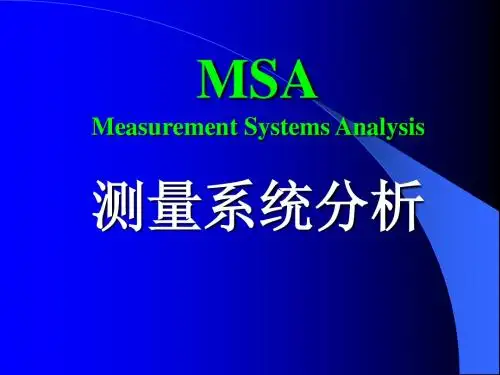


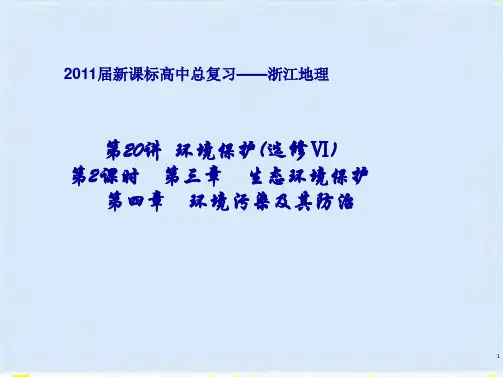
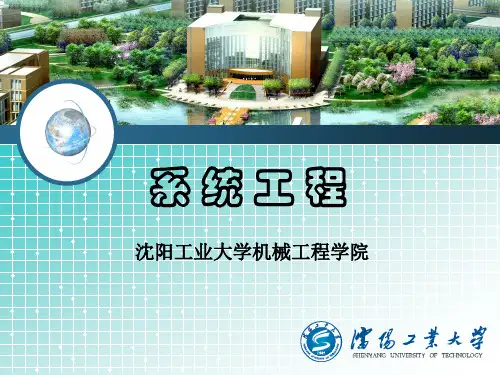


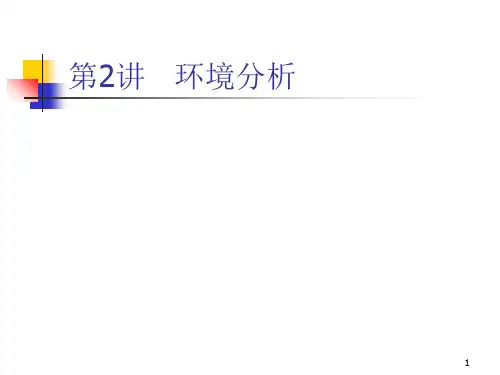

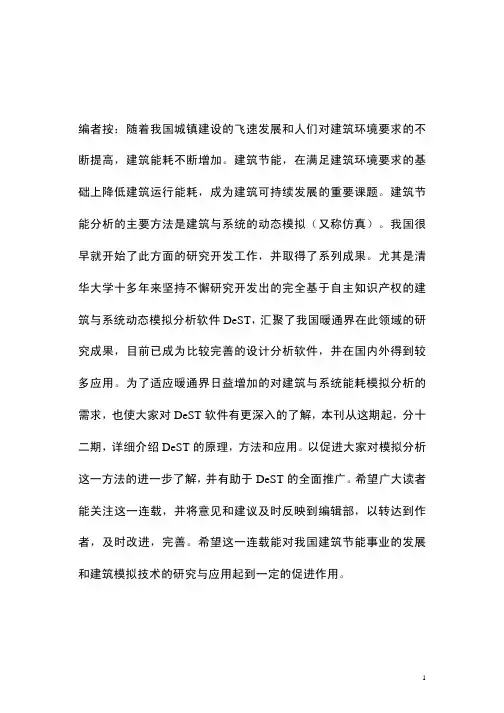
编者按:随着我国城镇建设的飞速发展和人们对建筑环境要求的不断提高,建筑能耗不断增加。
建筑节能,在满足建筑环境要求的基础上降低建筑运行能耗,成为建筑可持续发展的重要课题。
建筑节能分析的主要方法是建筑与系统的动态模拟(又称仿真)。
我国很早就开始了此方面的研究开发工作,并取得了系列成果。
尤其是清华大学十多年来坚持不懈研究开发出的完全基于自主知识产权的建筑与系统动态模拟分析软件DeST,汇聚了我国暖通界在此领域的研究成果,目前已成为比较完善的设计分析软件,并在国内外得到较多应用。
为了适应暖通界日益增加的对建筑与系统能耗模拟分析的需求,也使大家对DeST软件有更深入的了解,本刊从这期起,分十二期,详细介绍DeST的原理,方法和应用。
以促进大家对模拟分析这一方法的进一步了解,并有助于DeST的全面推广。
希望广大读者能关注这一连载,并将意见和建议及时反映到编辑部,以转达到作者,及时改进,完善。
希望这一连载能对我国建筑节能事业的发展和建筑模拟技术的研究与应用起到一定的促进作用。
建筑环境设计模拟分析软件DeST第一章、建筑模拟技术与DeST发展简介清华大学 燕 达 谢晓娜 宋芳婷 江 亿燕达,男,1978年1月生,大学,在读博士研究生100084 北京清华大学建筑学院建筑技术科学系 (010)62789761yanda00@摘要模拟技术自本世纪60年代应用于建筑业以来,取得了许多重要的成果,形成了若干建筑模拟软件。
清华大学建筑技术科学系自80年代开始开发具有自己鲜明特点的建筑环境设计模拟分析软件—DeST(Designer’s Simulation Toolkits)。
DeST可用于建筑能耗模拟和环境控制系统的设计校核,起到提高设计的质量、保证设计的可靠性和降低系统能源消耗的作用。
本章介绍了建筑模拟技术的发展历史,总结比较了各类模拟软件的特点,介绍了DeST 的整体思想和构架,以及DeST可应用的领域。
关键字 建筑环境模拟 DeST 综述An overview of developments and informationof Building Simulation and DeSTAbstractMany Building Simulation Programs (BSPs) have been developed since the computer-aided simulation technology was first applied in the field of HV AC in the 60s. In early 1980s, the Department of Building Science of the Tsinghua University started to develop the first building simulation tool for China. The tool is named DeST (Designer’s Simulation Toolkits), it is a great achievement based on the team effort of the department for about twenty years. DeST can be used to simulate and analyze both building energy consumption and HV AC system design; so as to improve the reliability of system design, to ensure the quality of the system performance and to reduce energy consumption of buildings. This chapter reviews the state-of-the-art on thedevelopment of building simulation technology, summarizes the characteristics of current BSPs, and introduces the basic idea, construction and applications of DeST.KeywordsBuilding Simulation, DeST, overview一、为什么要进行建筑模拟建筑环境是由室外气候条件、室内各种热源的发热状况以及室内外通风状况所决定。